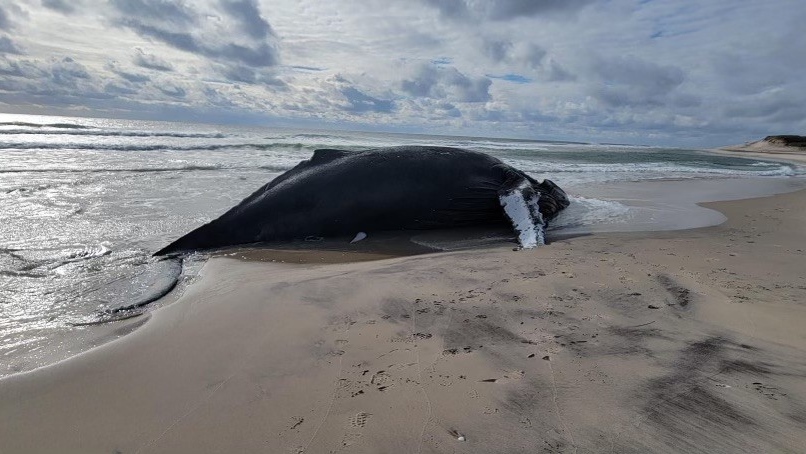When a male humpback whale washed up in the surf along Sable Island, roughly 250 kilometres off the coast of Nova Scotia, on Nov. 2, Parks Canada staff stationed there knew it was unlikely much could be done to help get it back to sea.
“We knew we didn’t have any equipment or ability to assist this whale,” said Sarah Medill, a Parks Canada staff member who works on Sable Island.
The Marine Animal Response Society (MARS) was contacted, but they weren’t able to help either and the animal passed away a few days later on Nov. 7.
“Just because of the logistics and the size of the animal, there really is nothing we can do other than letting nature take its course,” said MARS executive director Tonya Wimmer.
In the meantime, Parks Canada staff discovered something interesting while taking photographs.
“At one point, it lifted its tail,” Wimmer said. “And with humpback whales, you can actually have a unique pattern on the underside of their tail.”
The photo of the whale’s markings was sent to the Centre for Coastal Studies and to Allied Whale at the College of the Atlantic, where it was found that someone else had encountered the same whale off the Dominican Republic more than 40 years ago.
“It was an animal that was first photographed in 1982, and it wasn’t a calf – so it wasn’t sort of a newborn,” Wimmer said. “So we know the animal is at least 43 or so years old.”
From there, the marine mystery deepens further.
It turns out the last documented sighting of this whale was in 1992 or 1993.
“So this animal actually hadn’t been seen since that time in those early 90s, and no one knows where it’s been since,” Wimmer said.
Marine ecologist Bruce Hatcher of Cape Breton University says given how huge the ocean is, even a creature this size can stay off the radar.
“I’m actually not at all surprised that no one’s seen it for that many years,” he said.
Hatcher added it’s too bad a necropsy couldn’t be done to find out what caused it to beach.
“Cause of death is a whole other question, but I’m not surprised that a whale could live its life for 30 years without being detected,” he said.
Parks Canada and MARS said it’s possible others who have catalogued marine life over the years may have taken a photo of this particular whale at some time during the intervening three decades.
“Hopefully people have some images they haven’t quite checked yet and we might get a little more information about him,” Wimmer said.


